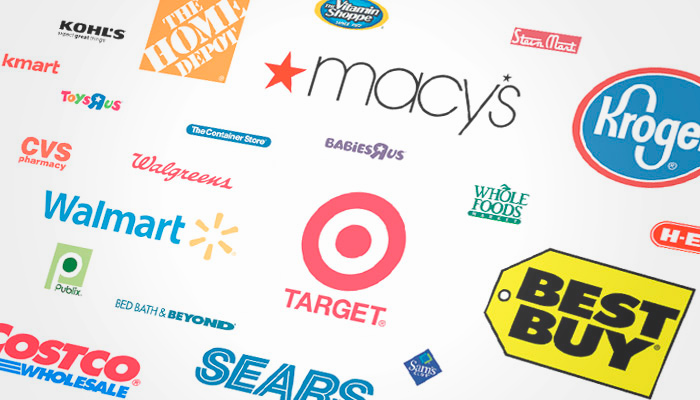
HOW TO SURVIVE THE RETAIL PANDEMONIUM
VIPER THOUGHT LEADERSHIP #9
By Miki Berardelli, Lana Krauter and Monica Woo
Nine minute read
Forty-three retailers have filed for bankruptcy so far in 2020. There have already been more retail bankruptcies this year than in the past eight years, according to the S&P Global[1]. Many bankrupt retailers were saddled with debt or failed to resonate with shoppers even before COVID-19, and the economic volatility has compounded their collapses. The pandemic has depressed back-to-school sales and is expected to erode the historically critical Thanksgiving and Q4 holiday shopping season.
Three C-suite executives offer practical advice on how retailers can survive bankruptcies and disruptions. Lana Krauter was the former CEO of Charming Charlie and President of Apparel at Sears Holdings Corp. Miki Berardelli was the former CEO of Kidbox and President of Digital Commerce at Chico’s FAS, Inc. Monica Woo was the former President of 1800Flowers.com and Chief Revenue Officer of FreshDirect.
LANA KRAUTER: COVID-19 has created irreversible shifts in consumer behavior. The new norm includes staying home, working from home and adapting to new technology to stay safe. Retailers that are heavily indebted, mall-based, selling products and services considered non-essential during COVID, are at risk. Companies that can pivot and adapt rapidly to the new customer expectations will survive. I recommend three guiding principles for survival.
#1. Customer focus. Strengthen your brand’s positioning with outstanding and relevant product assortments, that can be ordered online and either delivered to a customer’s doorstep or picked up in the physical store. Optimize inventory to prevent out-of-stocks, which depletes revenue, cash flow and customer satisfaction.
#2. Prioritize eCommerce and innovations. Make online and on-mobile shopping easy, safe, reliable, and convenient. Grow revenue with innovative products and partnerships. Designer Shoe Warehouse (“DSW”) is selling their products in physical stores and online at Hy-Vee supermarket chain. I admire that win-win strategic partnership!
#3. Bolster your business model. Double-down on proven business practices:
- Conserve cash and liquidity.
- Implement disciplined expense management.
- Implement processes and infrastructure to enable a flexible and fast supply chain.
MIKI BERARDELLI: The pandemic has prompted consumers of all generations to shop online, including boomers who historically were late adopters of online shopping. eMarketer estimated that 86% of Millennials, 79% of Gen X and 62% of Boomers are digital buyers in 2020[2]. Even high-end fashion retailers that have historically been resistant to eCommerce are reinventing their business models. The Armani Group is partnering with Yoox Net-a-Porter global logistics network and eCommerce platform to integrate digital and physical stores. All shoppers, regardless of their proximity to Armani’s physical boutiques, can now purchase Giorgio Armani, Emporio Armani and A|X Armani Exchange. That’s exciting!
MONICA WOO: Digital commerce penetration has expanded more in the past three months than it has over the past 10 years[3]. I’ve led eCommerce businesses since the mid-90’s and have never seen such acceleration. Essential omnichannel retailers with strong eCommerce capabilities, such as Target, Walmart and Home Depot, have all exceeded their quarterly earnings expectations. I’m delighted to learn that non-essential retailers are also embracing consumers’ rapid shift to online shopping. Miki, what are the key eCommerce success drivers for fashion and beauty retailers?
MB: Well, three drivers immediately come to mind.
First, customer engagement. The entire shopping experience, from browsing online to opening up the orders, should create anticipation and excitement. Benefit Cosmetics revamps its strategy when the pandemic forces store closures starting in March. The brand engages the consumers with one-on-one virtual consultations with their Benefit Beauty Artists or Brow experts. They also post live tutorials on Instagram that integrate with the shopping features of social media platform. Consumer can purchase items used in the tutorials without leaving the app. Great example of consumer engagement.
Second, personalization. I admire retailers like Ulta and Sephora that enable shoppers to sample products at home, by using augmented reality and virtual reality to simulate online the high-touch services offered in physical stores. And, the first-party shopper data guides brands to offer personalized shopping experience and relevant product recommendations.
Third, giving back. I love Kidbox, the online subscription service for brand name kids fashion. When the customer keeps an entire box of the items selected, Kidbox donates clothes to a child in need. Doing good is good for customer loyalty and revenue growth. Doing good is cool!
MW: Miki, you are so right. Doing good does resonate with consumers. Despite the pandemic, Imperfect Foods has growth active user base by 40%. This subscription box service fights food waste, by selling at 30% to 50% discount high quality “ugly fruit and vegetables” which have been historically been discarded by grocery retailers. Besides saving money, consumers feel good about improving the food system. During the pandemic shutdown, Imperfect Foods sold JetBlue’s cheese and cracker snack plates, and broccoli florets usually reserved for restaurants. Win-win proposition for consumers, farmers and food purveyors.
Expanding on Lana’s point about inventory management. Per the MIT Sloan Management Review survey[4] conducted in late March 2020, two weeks after the stay-at-home directives were issued in most of U.S., 54% of shoppers surveyed reported that they had purchased brands that were new to them. “Favorite brand was out of stock” was the most frequently cited reason for buying a new brand. Manufacturers and retailers need to mitigate the risk of customer attrition by optimizing stock position.
LK: That is why, I advocate that retailers leverage VIPER EA, a leader in retail analytics. By analyzing data collected throughout the enterprise and using Machine Learning models, VIPER can help retailers maximize the profitability of assortments by rationalizing under-performing products, and focus resources on the highest demand and most profitable SKUs.
MB: VIPER pinpoints profit leakages at both the enterprise and hyperlocal level — by business unit, product, geography, store location, operating function, vendor, external partner, fulfillment and distribution center and strategic initiative. VIPER’s unique capability in detecting hidden savings is invaluable to bolstering retailers’ financials during volatile times.
MW: Besides identifying profit opportunities by selling location and product, VIPER also recommends practical actions to improve the productivity of under-performing associates by store. With VIPER, district and regional managers can detect workflow deficiencies and train store associates accordingly.
LK: Talking about win-win partnership. I love VIPER’s $1 million Profit Improvement Guarantee™, to support retailers during these challenging times. VIPER will achieve a minimum of $1 million in profit increase or pay the difference. Now, that is true commitment to customer success!
Miki Berardelli is principal at miki b LLC, board director of ShopRunner and Advisory Board Member of Evergreen Trading. Previously, she was the CEO of Kidbox, President of Digital Commerce at Chico’s FAS, Inc. and Chief Marketing Officer of Tory Burch. Miki is an advisor to the Board of VIPER EA LLC.
Lana Krauter is a board director of Exenta. Previously, she was the CEO and board director at Charming Charlie, President of Apparel at Sears Holdings Corporation and Bealls. She was also an independent board member of TLB Holdings. Lana is an advisor to the Board of VIPER EA LLC.
Monica Woo is the CEO of WooWorks, which advises and invests in digital commerce, AI and omni-channel retail. Previously, she was President of 1-800-Flowers.com and Bacardi Global Brands, and FreshDirect’s Chief Revenue Officer. Monica is an advisor to the Board of VIPER EA LLC.
[1]. CNBC, “As pandemic stretches on, retail bankruptcies approach highest number in a decade”, August 3, 2020
[3]. Ron Offir, Managing Director@ Deloitte Digital, August 2020
[4]. MIT Sloan Management Review, “Growth Opportunities for Brands During the COVID-19 Crisis”, May 5, 2020



